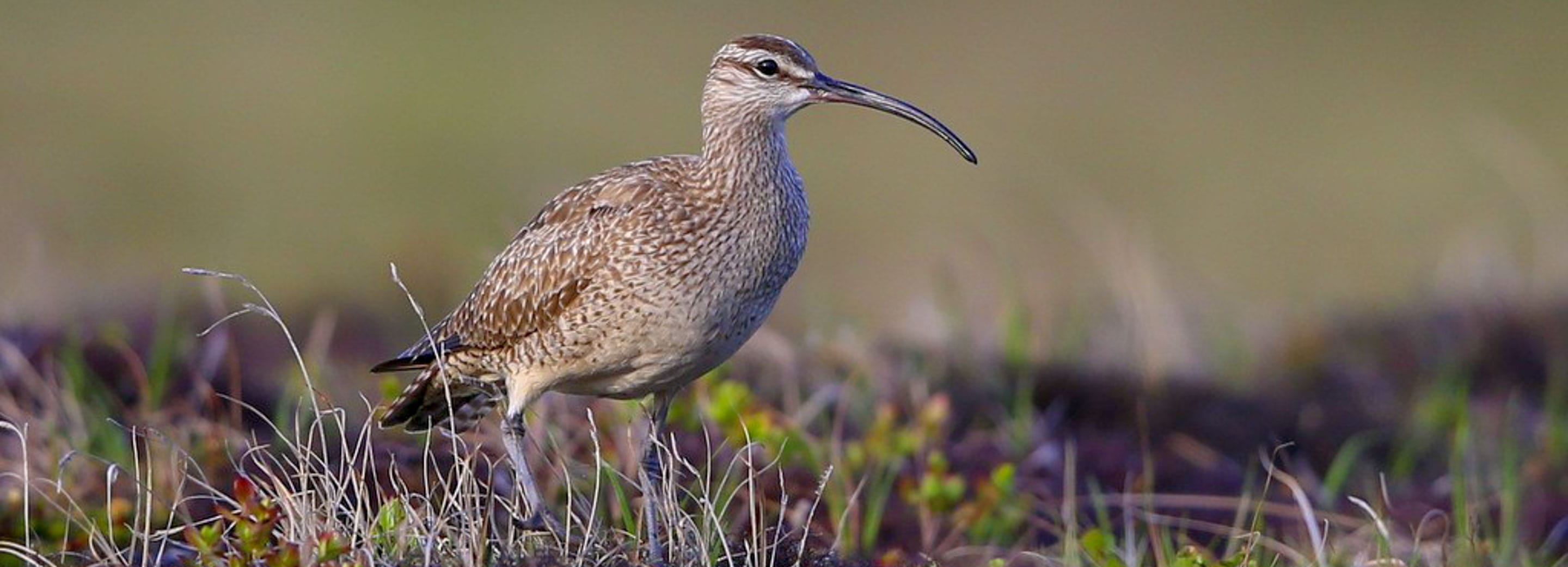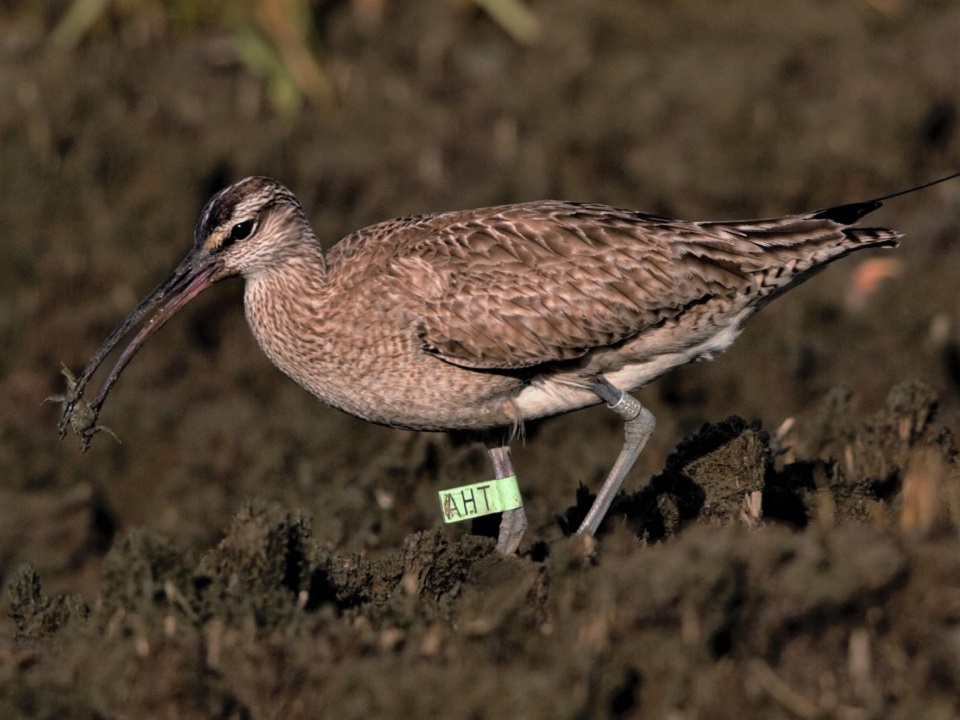Alan Kneidel, Staff Biologist, will be presenting on Manomet’s research to uncover habitat needs and migratory pathways of large shorebirds called Whimbrels. He’ll provide an overview on Whimbrel ecology, Manomet’s fieldwork in Cape Cod (and beyond), and how we plan to expand the scope of the project in the coming years so as to fully understand the resource needs of these birds. This study is the first to track Whimbrels during their first year of life.
Many shorebird populations are declining. To understand what threats are impacting survival, Manomet is conducting research to uncover habitat needs and migratory pathways of large shorebirds called Whimbrels.
Whimbrels breed on the tundra of Arctic and sub-Arctic North America and some migrate to the saltmarshes and beaches of Cape Cod, Massachusetts from July to October. While on the Cape, they feast on fiddler crabs by day and roost on barrier sand-spits at night. In doing so, Whimbrels stockpile the energy reserves needed to fuel their subsequent non-stop flight to their coastal wintering grounds in the Caribbean and South America.
Since 2015, Manomet staff has deployed five lightweight (5 g) satellite transmitters on juvenile Whimbrels in the marshes of Cape Cod during the first southbound migration of their lives. These transmitters can relay specific location data for several years and allow us to answer specific questions such as the: timing and patterns of migration, identification of feeding and roosting locations at migratory stopover sites, location of nesting sites and wintering sites, and identification of threats the birds may encounter.
While our work has begun to reveal the migration secrets we seek, we plan to expand the scope of the project in the coming years so as to fully understand the resource needs of these birds. This study is the first to track Whimbrels during their first year of life. The results of this work will be directly applicable to shorebird conservation efforts throughout the Americas.





 Back to all
Back to all
